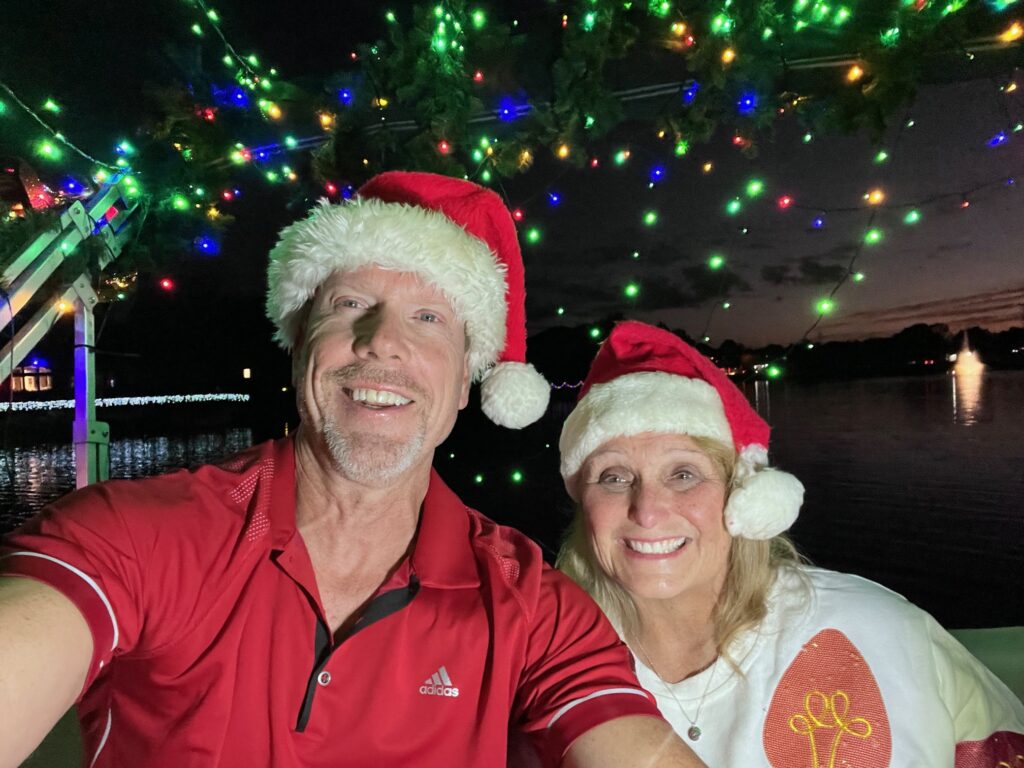Floating Christmas presents – behind the scenes of a holiday boat parade
by Tom Mueller
Nothing quite unites a community like a local parade, when residents gather to have fun, share smiles and handshakes, and to feel part of the community. But decorating a float or a vehicle for a parade is a whole other commitment, requiring time and lots of creative energy.
All the more so when your parade is at night, and your vehicle is lighted and floating in the water. The confluence of water, weather, electric lights, and the need for electricity to power it all just amplifies the value of creative energy.
A floating gift
In the Grayson Lakes neighborhood in Katy, Texas, boat owners demonstrate their mastery of these elements each year while creating floats for the community’s holiday boat parade. It’s like creating a gift for your neighbors and wrapping it in lights instead of paper.
The 530-home neighborhood is built around four small lakes that create a lovely residential setting for boating, kayaking, fishing, and just walking alongside its idyllic, rippled waterways. Residents who live on one of the lakes can also build docks, and once you have a dock, well, you really need a boat. And if you have boats, maybe you need a parade?
“It seemed like the logical thing to do,” says Pam Alloway-Mueller, who originated the idea in 2007, shortly after buying a home there with husband Tom Mueller. The couple, who met in the 1980s while crewing aboard the Tall Ship Elissa in Galveston, had a maritime background and were familiar with the Kemah Boat parade, the granddaddy of boat parades in Houston. Bringing a boat parade to Grayson Lakes just seemed a logical, and fun, thing to do. “Water plus boats plus Christmas equals boat parade, doesn’t it?”
Decorating a floating object brings its own challenges, especially when rigging overhead lights and decorations. The largest boat allowed on the lakes is just 16 feet, and deploying a ladder on a watercraft that size requires some dexterity and balance. These floating floats must also be designed to withstand the elements, as they will remain decorated and be parked on the water for several weeks – through windy storms, rain and waves.
Then there’s the challenge of finding a power source to run all of the lights and inflatables that appear on the boats. A good marine battery connected to a 12 volt inverter does the trick, but a lingering question always beckons: how long will the power last? Will it get us through the full parade, or die somewhere along the way? Especially for the boat captains who change up their design from year to year, the power load is always a concern. The advent of LED lights has significantly reduced the power load today. But in the early years when incandescent lighting was the norm, the power equation proved more of a gamble. A sudden and prolonged wail from an inverter that was rapidly losing power signaled the float’s imminent plunge into darkness. That too, was part of the fun and creative challenge – maximizing the nighttime décor without running out of juice early.
Is it a competition?
In the early years, residents along the shoreline could rate each boat and the winner would receive a small gift certificate for a local restaurant or shop. That spurred ingenuity and creativity, but as the population has aged, that practice has fallen away in favor of a less competitive event.

“We’re just happy to have neighbors who will take the extra time required to decorate a boat and participate in the parade,” says Alloway-Mueller. “Even after 17 years of boat parades, it’s one of the many things that makes this neighborhood such a great place to live.”


